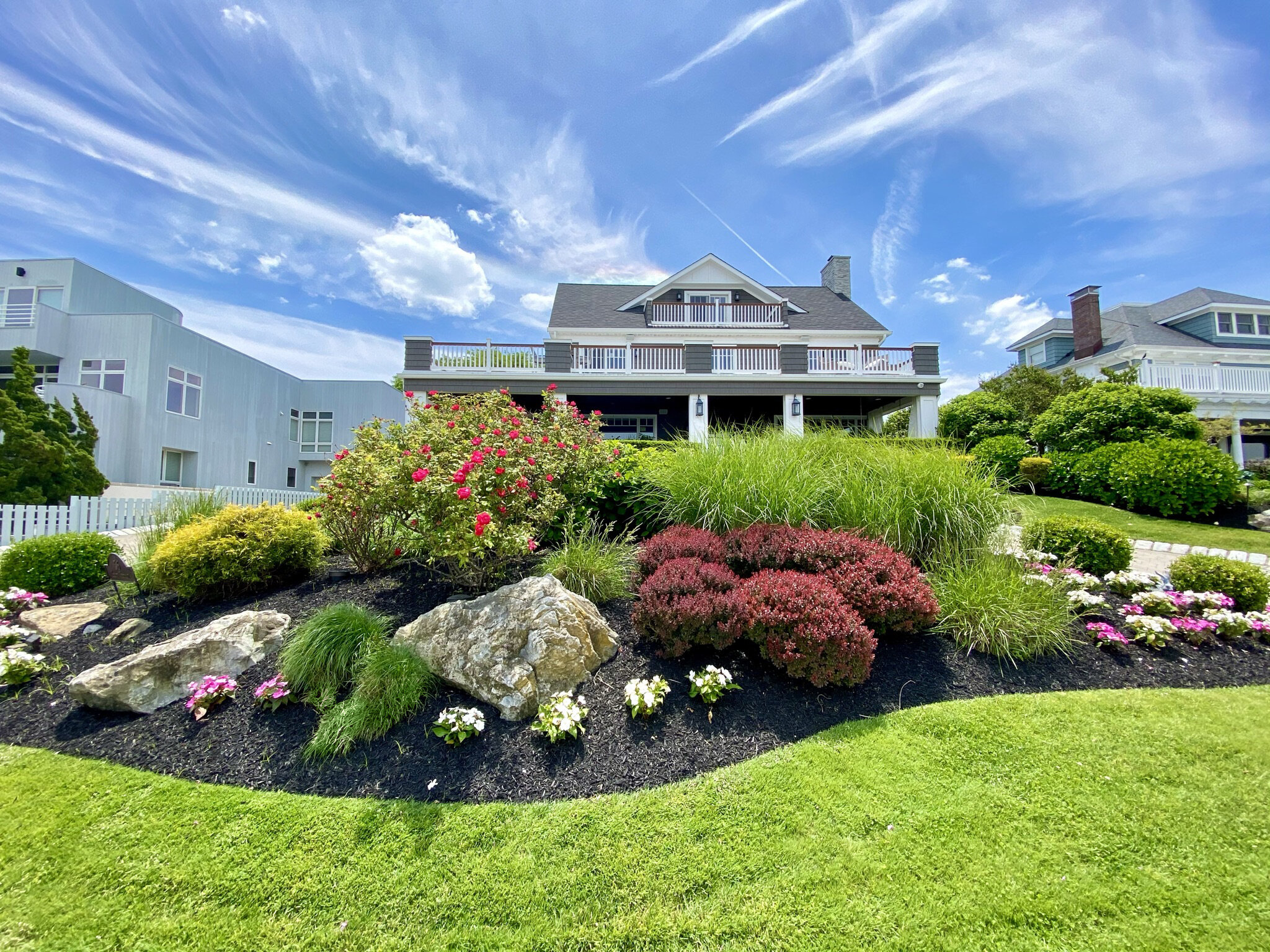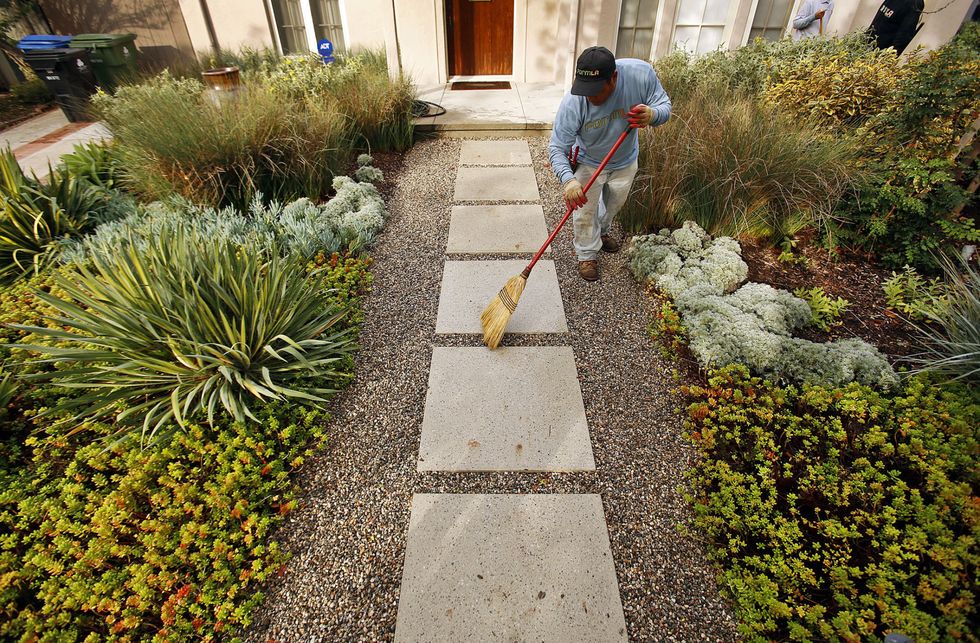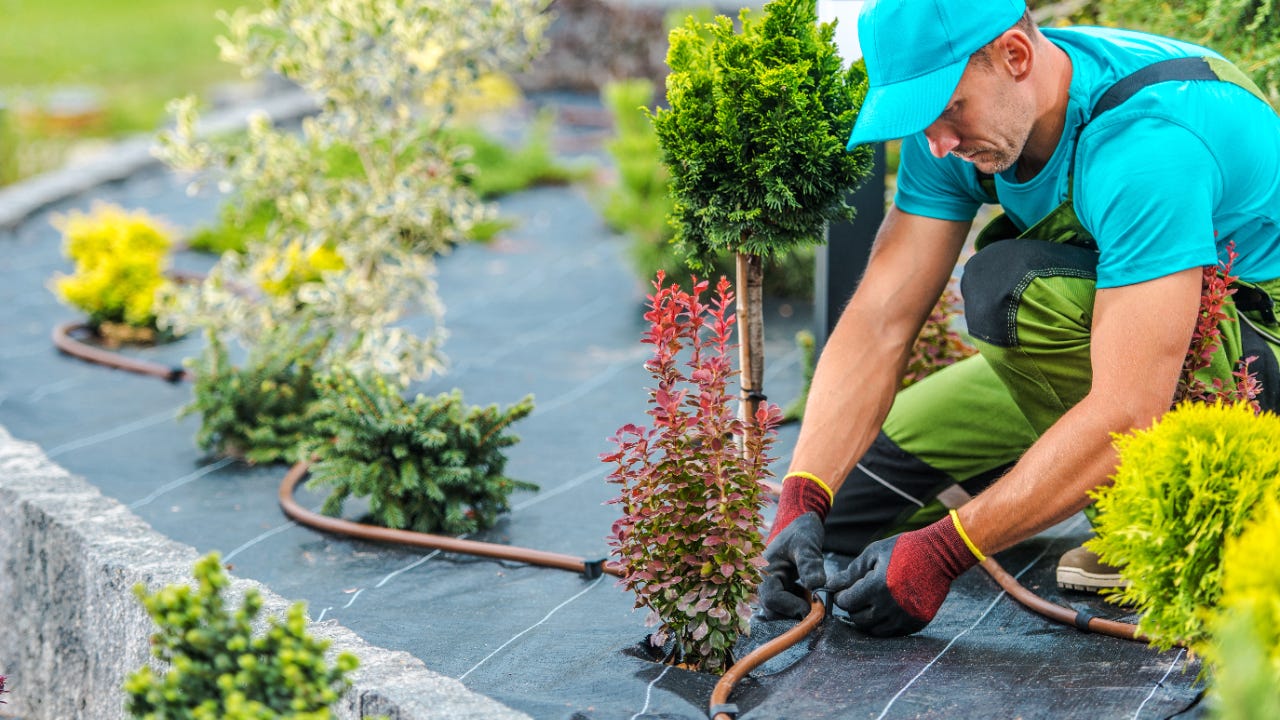A Comprehensive Guide to Designing and Implementing Effective Landscaping Solutions
The art and scientific research of landscaping extend past plain visual appeals; they include a thoughtful integration of layout concepts, environmental stewardship, and practical implementation. A comprehensive overview to efficient landscaping solutions starts with a thorough understanding of your outside space, emphasizing the relevance of percentage, equilibrium, and unity. As we discover sustainable techniques and the selection of appropriate vegetation, the implications for biodiversity and area well-being end up being progressively evident. What approaches can one use to guarantee these landscapes not only flourish but likewise flourish attuned to their environments?

Recognizing Landscape Style Concepts
One may wonder what fundamental aspects contribute to efficient landscape design. At its core, effective landscape style depends upon a number of key concepts that direct the setup and choice of elements within an area. These principles consist of unity, rhythm, equilibrium, and proportion, each offering to create an unified outdoor setting.
Unity refers to the natural relationship amongst various parts, making sure that they collaborate cosmetically and functionally. Balance can be accomplished through asymmetrical or balanced arrangements, enabling the landscape to really feel stable and welcoming. Percentage involves recognizing the range of elements in regard to each various other and the surrounding environment, promoting aesthetic consistency and comfort.

Evaluating Your Outdoor Room
Before applying the principles of landscape style, a thorough evaluation of your outdoor room is important. This first assessment helps define the extent of your landscaping job and makes certain that your style straightens with the unique attributes of your home. Begin by examining the measurements of your room, taking precise measurements to comprehend the readily available location for numerous elements such as yards, paths, and outdoor patios.
Following, observe the existing functions of your landscape, consisting of topography, dirt top quality, and drain patterns. These aspects considerably affect plant option and positioning. Additionally, analyze the sunshine direct exposure across different areas throughout the day, as this will influence the sorts of plants that prosper in your yard.
Think about the microclimates created by structures, trees, and various other barriers, as they can impact temperature and moisture degrees. Finally, bear in mind of any type of existing plants or hardscape aspects that you wish to retain or get rid of. This comprehensive analysis lays the foundation for a efficient and knowledgeable landscaping solution, making certain that your style is not just visually pleasing but additionally practical and lasting for many years to come.
Lasting Landscaping Strategies
Integrating sustainable landscape design techniques is essential for developing an eco accountable outdoor area. These practices not just promote eco-friendly balance however also improve the aesthetic and useful value of a landscape. One foundational technique is the utilization of indigenous plants, which need less water and upkeep while supporting regional wild animals. Carrying out efficient irrigation systems, such as drip watering, minimizes water waste and makes sure that plants receive appropriate dampness.

One more effective method is the critical placement of bushes and trees to give natural windbreaks and shade, hence lowering power prices (Palm Desert Landscaping). Rain gardens can be incorporated into the landscape style to take care of stormwater runoff successfully, filtering system pollutants before they get in rivers
Choosing the Right Plants
Choosing the right plants for your landscape is critical to achieving both visual allure and ecological harmony. The process begins with an understanding of your regional environment, dirt conditions, and the particular microenvironments within your landscape. Examining variables such as sunshine direct exposure, moisture levels, and existing plants will certainly aid you choose plants that flourish in your special setup.
Take into consideration including native plants, as they are well-adapted to neighborhood problems, call for much less maintenance, and support local wild animals. Furthermore, choosing a diverse range of types can boost biodiversity while lowering the risk of disease and pest outbreaks. It is important to evaluate the growth practices, flowering durations, and seasonal colors of prospective plants to produce a cohesive and dynamic landscape.
Furthermore, think regarding the intended use of the space; as an example, if the location will certainly experience high foot traffic, go with resilient ground covers. By attentively choosing plants that straighten with both your visual objectives and environmental requirements, you can produce a lasting landscape that not only boosts your navigate to this site home but likewise contributes favorably to the bordering environment.

Execution and Maintenance Techniques
As soon as the ideal plants have actually been selected for your landscape, the focus shifts to reliable application and ongoing upkeep methods. Effective setup starts with proper website prep work, that includes dirt testing to figure out nutrient degrees and pH, adhered to by modifying the soil as needed. Very carefully set up plants according to their growth habits and light needs, making certain adequate spacing to promote healthy development.
Irrigation is a vital component of application. Establish a watering schedule that takes into consideration the particular requirements of each plant species, adjusting for seasonal modifications. Making use of drip irrigation systems can enhance water effectiveness and lower drainage.
Maintenance techniques need to be applied to make sure the long life and vigor of your landscape. Normal jobs consist of weeding, mulching, and trimming to regulate development and avoid disease. Fertilizing needs to be carried out based upon dirt examinations, giving the necessary nutrients without over-fertilizing.
Checking for conditions and bugs is necessary; early discovery can stop substantial damage. Seasonal adjustments to maintenance routines, such as winterizing perennials and preparing for spring growth, will guarantee that your landscape stays visually enticing and healthy year-round.
Conclusion
Successful implementation and continuous maintenance better make certain the longevity and vigor of landscapes. By integrating these aspects, landscapes can be changed into beautiful, useful atmospheres that advertise biodiversity and add favorably to community health.
One might question what foundational elements contribute to efficient a fantastic read landscape design. At its core, effective landscape design pivots on numerous essential concepts that guide the plan and moved here option of elements within a space.Selecting the right plants for your landscape is essential to accomplishing both visual charm and eco-friendly consistency. It is crucial to review the development practices, flowering durations, and seasonal shades of prospective plants to develop a natural and dynamic landscape.
When the ideal plants have actually been picked for your landscape, the focus moves to efficient application and recurring upkeep techniques.